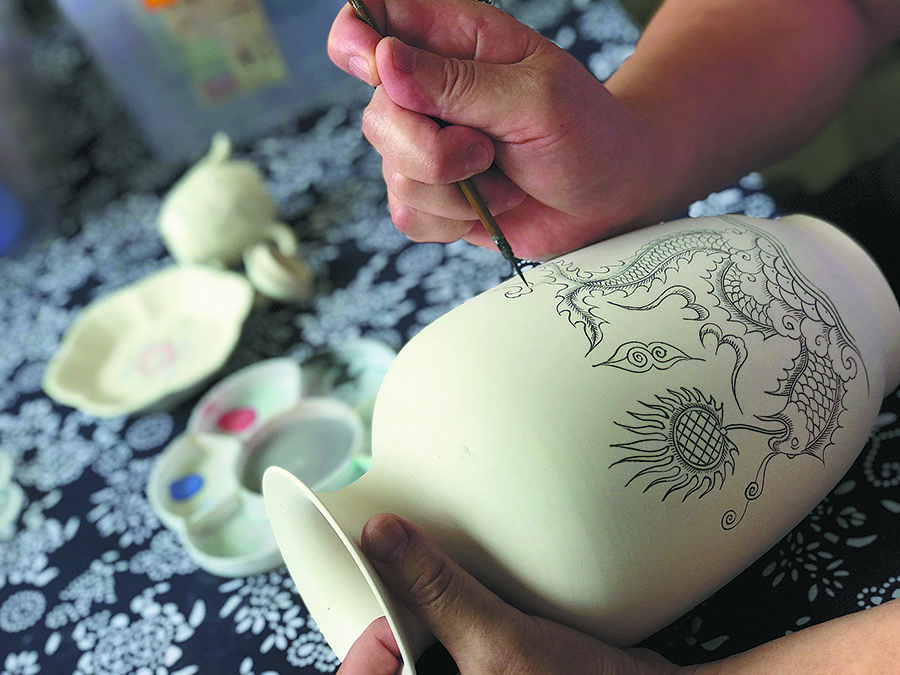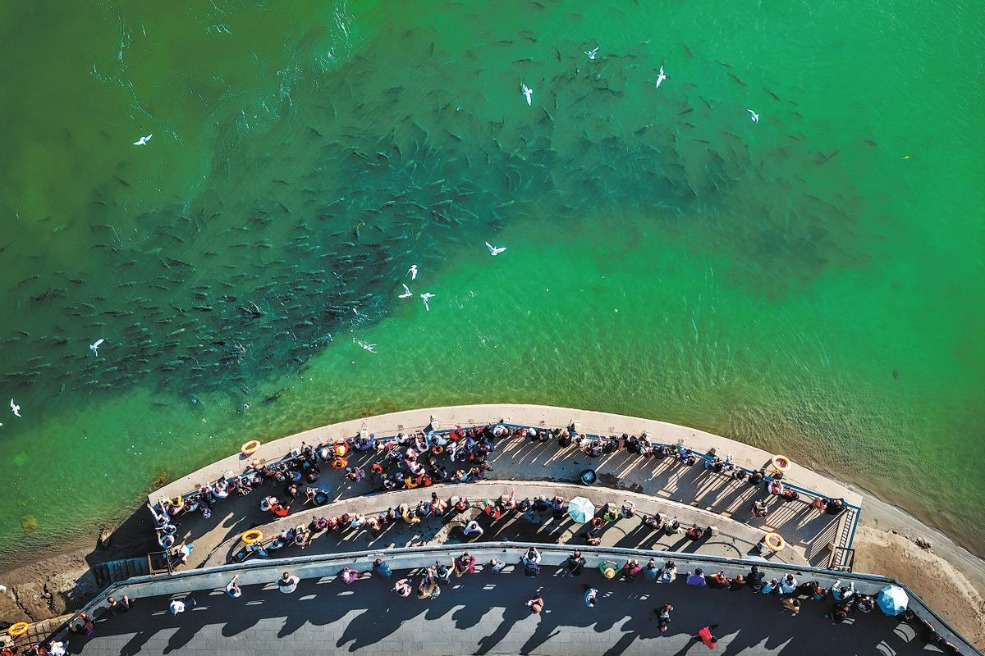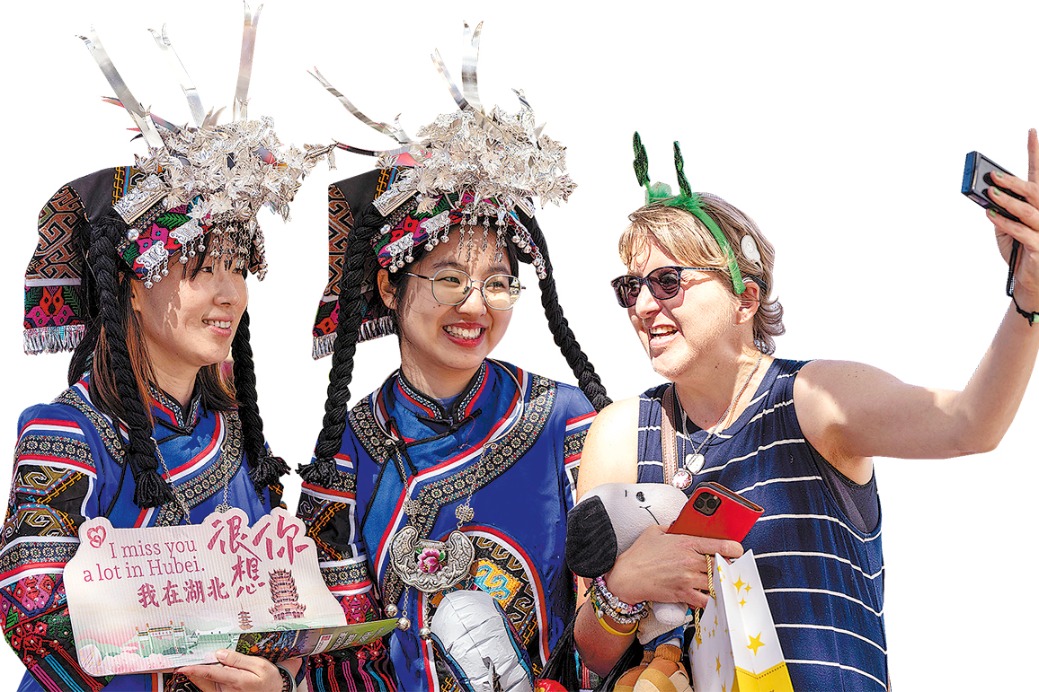Breathing new life into brushwork


It was Liang's grandfather and father who stepped in to preserve this cultural treasure by collecting and refining Miao patterns, and designing motifs of their own.
Liang's grandfather was a schoolteacher who sketched patterns for embroiderers in the mid-20th century.
"He only outlined the designs, leaving the choice of colors to the women," Liang says.
The tradition passed to Liang's father, who began by drawing simple outlines but soon infused his work with his own creativity and personal flair. His designs, inspired by the world around him, became highly sought-after.
"Every five days, people from nearby villages would come to my father for patterns for their clothes and quilts," Liang says.
By the 1950s, as Miao women became too busy with farm work to embroider, Liang's father came up with a revolutionary solution: he painted Miao patterns directly onto the costumes, in place of embroidery.
This marked a pivotal shift from embroidery to stand-alone paintings, a bold innovation that redefined the art.
Since the Miao have no written language, painting has become an outlet for them to express their culture.
"My father would design patterns inspired by nature — flowers, birds, butterflies — and the myths we hold dear. Then, skilled women would embroider these designs, turning them into wearable art," says Liang, who has followed in his father's footsteps, learning Miao painting since he was 7.
As he honed his skills, Liang started to appreciate how the motifs reflect aspirations for joy, prosperity, longevity and bountiful harvests.
"Symmetry is a hallmark of Miao painting, and there are some things you can paint, and some you cannot," he says.
For example, a pair of magpies symbolize double happiness, and the position of the dragon on the left and the phoenix on the right must not be mistaken. The combination of magpies and plum blossoms, or phoenixes and peonies, also follows specific rules.
Liang sees composition as key. Despite this, there are no rigid rules or fixed techniques, and painters have to rely on their intuition and experience of mixing and matching basic patterns, making every painting unique, he explains.
"Additionally, composition requires smooth, full lines and symmetrical forms. All the conceptualization happens in your mind. Every stroke must be precise, with no room for error or correction," he says.
As his understanding and skill grew, the rise of machine-made clothing in the 1980s threatened the craft once more. The demand for hand-painted Miao patterns dwindled.
At 22, Liang was forced to lay down his brush and take up miscellaneous jobs, from farming to construction, to make a living.
Even so, he never let go of the craft entirely.
"I kept painting from time to time, to keep my hand in," he says.
His break came in 2003, when folk art made a comeback. Local authorities tasked Liang with collecting Miao painting elements. This encouraged him to focus on his family heritage. He set a five-year goal of painting all the patterns he could find.
"Even if there was no market, I would be able to leave these paintings for future generations," he says.
























